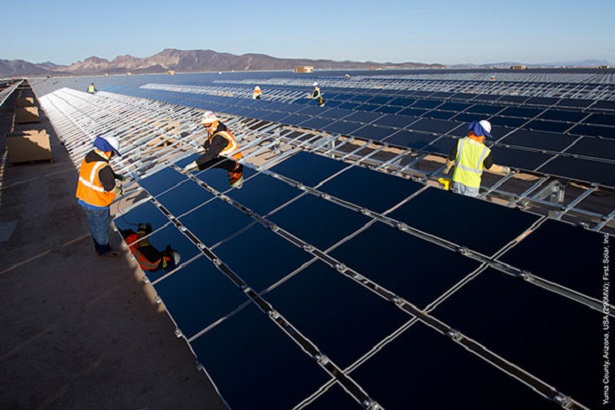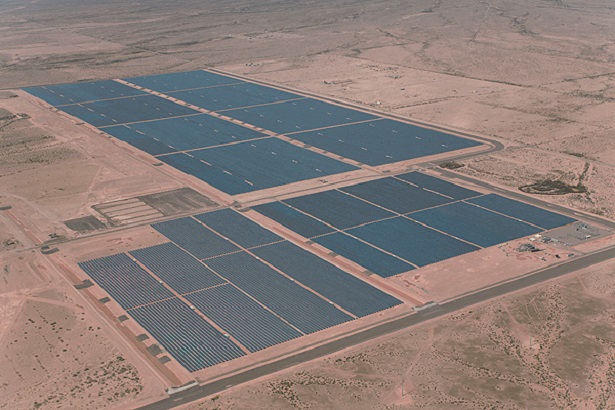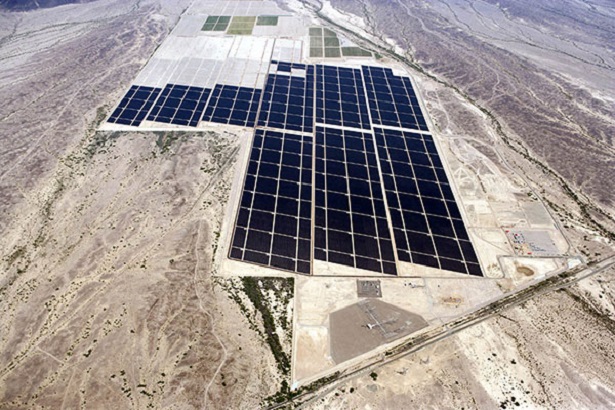2) Mesquite Solar Project, Arizona USA (413GWh)
The only area that rivals the Mojave Desert in the US for intense solar radiation would have to be the southern Arizona desert. With over 300 days of sunshine, The Mesquite Solar Project is well situated, 100 kilometers outside the major metropolitan area of Phoenix (Pop. 1.5 million). It has the potential to power 260,000 homes. The plant is run by US power company, Sempra Energy with 800,000 panels supplied by Chinese manufacturer Suntech Power.
At 413GW/h, the Mesquite Solar project is massive, but it’s not the biggest in the world – nor is it the biggest in the United States, and, believe it or not, it’s not even the biggest plant in Arizona!
1) Agua Caliente Solar Project, Arizona USA (626GWh)
We’re finally here – the largest solar panel power plant in the world is located in the desert about 160 kilometers southwest of Phoenix. The plant was just completed in April 2014 and that has a lot to do with why it’s in the number 1 position. Swanson’s Law (really just an observation) tells us that the cost for the panels that make up a PV plant halve roughly every two years – meaning that every two years companies can build plants double the size for the same price.
Of course that’s not exactly accurate as there are other costs besides just the panels. Notably, the Agua Caliente installation went for a very cost efficient model. The panels are thin film cells manufactured by First Solar that are cheaper on a per watt basis than those manufactured from crystalline silicon.
The plant also does not use a tracking module to point the panels at the sun – another cost savings. This is a case of Swanson’s Law in action. Maximising the sheer number of panels and getting the most solar bang for the buck. If Swanson’s Law continues to prove true, don’t expect Agua Caliente to hold onto its number 1 position for long.
This story has been adapted from a previous list compiled by deCarnI















Comments